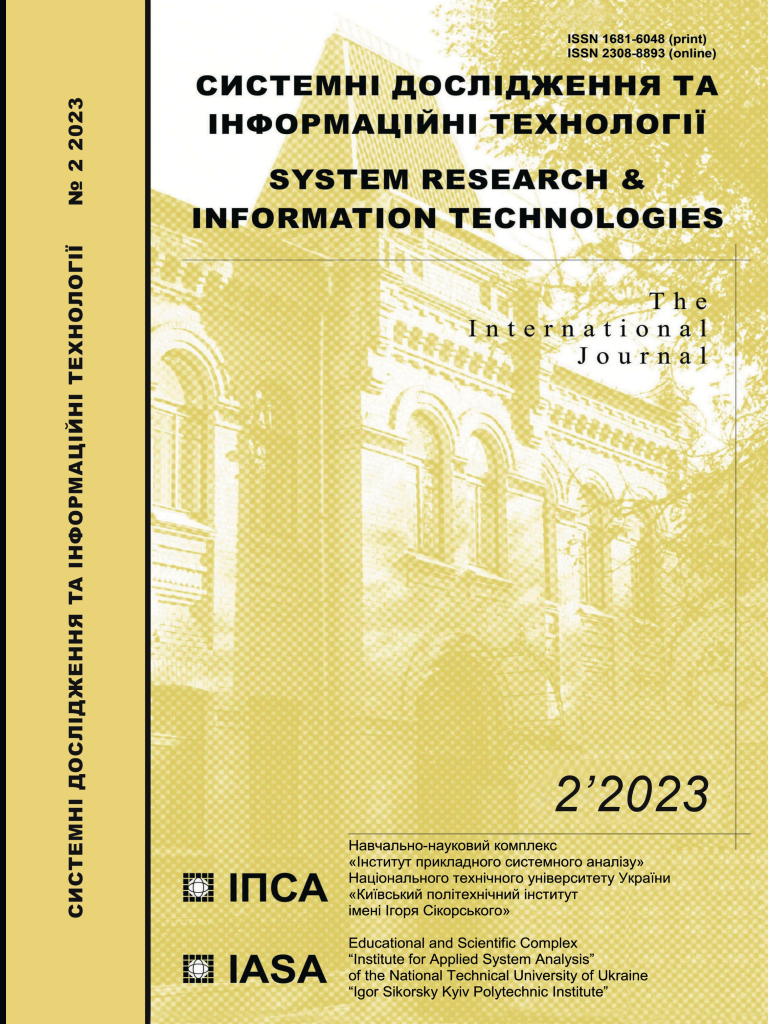Estimation of the parameters of generalized linear models in the analysis of actuarial risks
DOI:
https://doi.org/10.20535/SRIT.2308-8893.2023.2.10Keywords:
actuarial risk, generalized linear models, simulation modeling, exponential family of distributions, iterative-recursive weighted least squares method, Adam method, Monte Carlo method for Markov chainsAbstract
Methods of estimating the parameters of generalized linear models for the case of paying insurance premiums to clients are considered. The iterative-recursive weighted least squares method, the Adam optimization algorithm, and the Monte Carlo method for Markov chains were implemented. Insurance indicators and the target variable were randomly generated due to the problem of public access to insurance data. For the latter, the normal and exponential law of distribution and the Pareto distribution with the corresponding link functions were used. Based on the quality metrics of model learning, conclusions were made regarding their construction quality.
References
M.Z. Zgurovsky and N.D. Pankratova, System Analysis: Problems, Methodology, Applications. Kyiv: Naukova Dumka, 2011, 727 p.
O.G. Nakonechny and S.V. Demydenko, “Minimax mean square estimates of trend in the regression problems,” Tavria Visnyk of Informatics and Mathematics, no. 1, pp. 23–30, 2009.
O.G. Nakonechny, M.M. Veres, and B.V. Stashchuk, “Guaranteed estimates of linear equations solutions in Hilbert space with random parameters,” Journal of Computational and Applied Mathematics, vol. 104, no. 1, pp. 85–96, 2011.
D. Anderson et al., A Practitioner’s Guide to Generalized Linear Models – a foundation for theory, interpretation and application; 3rd edition. Towers Watson, 2007, 122 p.
P. McCullagh and J. Nelder, Generalized Linear Models; 2nd edition. Chapman & Hall, 1989, 532 p.
T. Zhang, “Iteratively reweighted least squares with random effects for maximum likelihood in generalized linear mixed effects models,” Journal of Statistical Computation and Simulation, vol. 91, no. 16, pp. 3404–3425, 2021. doi: 10.1080/00949655.2021.1928127.
D. Kingma and J. Ba, “Adam: A method for stochastic optimization,” arXiv preprint arXiv:1412.6980, 2014. doi: 10.48550/arXiv.1412.6980.
M. Liu et al., “An Improved Adam Optimization Algorithm Combining Adaptive Coefficients and Composite Gradients Based on Randomized Block Coordinate Descent,” Computational Intelligence and Neuroscience, vol. 2023, 14 p., 2023. doi: 10.1155/2023/4765891.
J. Ma and D. Yarats, “Quasi-hyperbolic momentum and Adam for deep learning,” arXiv preprint arXiv:1810.06801, 2018. doi: 10.48550/arXiv.1810.06801.
S. Bar-Lev and A. Ridder, “Monte Carlo methods for insurance risk computation,” arXiv preprint arXiv: 1807.02201, 2018. doi: 10.48550/arXiv.1807.02201.
A.S. Krah, Z. Nikolić, and R. Korn , “Machine learning in least-squares Monte Carlo proxy modeling of life insurance companies,” Risks, vol. 8, no. 1, 21 p., 2020. doi: 10.3390/risks8010021.

